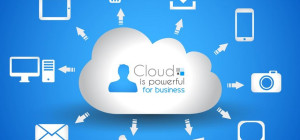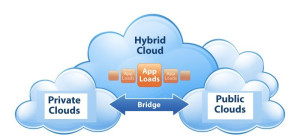 "The cloud." Chances are, you encounter this word daily. From Google Drive to iCloud to your business servers, any time you store information without using your internal data, you're storing information on the cloud.
"The cloud." Chances are, you encounter this word daily. From Google Drive to iCloud to your business servers, any time you store information without using your internal data, you're storing information on the cloud.
The thing is, what does "the cloud" actually mean? And, more importantly, how can cloud computing benefit you? The first thing to understand about the cloud is that it is not a physical thing. As the infographic below explains, the cloud is a massive, physical collection of interconnected information technology servers that are easily accessible by a user through a network.
An infographic by By Telx Data Centers
So while the cloud is not a physical thing, it does reside in a physical location - data centers all over the world - instead of some magical network in space. There are currently 50 million physical servers in the world. To give some perspective to this number, 900,000 of those servers are Google's, in 13 data centers worldwide. And these data centers are not the server rooms you used to see in the back room of your company. A company like Microsoft has a data center the size of 10 football fields.
Additionally, the cloud is not one specific thing; as mentioned, there are numerous interconnected cloud networks. And as usage grows, these networks will continue to grow. Without these server networks, the cloud work not exist today.
How do these advancements benefit your business? Instead of purchasing and maintaining data servers, companies are able to deliver their infrastructure through a cloud network. The benefits are obvious. According to various studies, 84% of CIOs cut application costs by moving to the cloud with a 21% average annual savings of moving to cloud computing.
What's important to point out is that personal use is what's driving business adoption. According to IT professionals, 73% of companies adopted cloud computing due to employee's personal use of the cloud. From iCloud to simple actions like uploading a photograph to your Instagram account or updating your Facebook account, these actions are all variants of cloud computing. Also, it's not just businesses that have taken notice; 27% of state and local governments have implemented cloud services in 2012.
This rapid surge in usage and new advancements in high-density computing is pushing the necessity of safe and secure servers. In a little over ten years, Internet usage has grown 556.4% worldwide. And CIOs are taking notice: 61% have stated cloud computing is their number one priority and 33% of IT budgets were spent on cloud computing last year. No longer do companies have to buy their own hardware equipment, whose value depreciated over time. With the cloud, business owners only have to pay for what they use and are able to access the same kind of applications through the Internet. Ease of use allows for companies to quickly scale up or down resources.
However, there are some risks that need to be considered when discussing a shift to cloud computing. Many companies have security and performance concerns, and the "inner workings" on the cloud is a complex, energy-intensive operation. In our next post we will discuss the biggest barriers of cloud computing.







